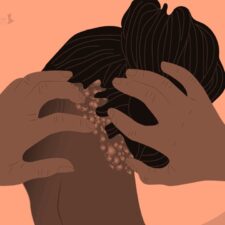
Is heartburn keeping you awake? Do you experience a bitter taste in your mouth? Your doctor says you have GERD, but what is GERD?
Gastroesophageal reflux disease (GERD) occurs when the contents of your stomach move up into the esophagus. This condition, while common, can cause long-term problems including damage to the esophagus, pharynx and respiratory tract. Dr. James East, a gastroenterologist at Mayo Clinic Healthcare in London, put it this way in a recent Mayo article: “The stomach is well designed to handle highly acidic conditions. But the esophagus is not designed to cope with acid.”
There is also a link between GERD and Barrett’s esophagus, a precancerous condition that may potentially develop into esophageal cancer.
Here, experts explain more about GERD, its causes, symptoms and treatment, including dietary changes you can make to prevent or help manage GERD.
1. GERD causes
What causes GERD? Acid reflux occurs when the valve between your esophagus and stomach doesn’t close properly, allowing stomach acid to wash back up through your esophagus to your throat and mouth. This is what causes the acid taste in your mouth.
There are several factors that can lead to acid reflux, according to the Cleveland Clinic.
- Too much pressure on the abdomen (if overweight or during pregnancy)
- Patients with hiatal hernia (where part of the stomach pushes up into the diaphragm and gets in the way of food)
- Some types of foods, such as dairy, spicy or fried
- Some medications (asthma, allergy, high blood pressure, painkillers, sedatives and antidepressants)
- Smoking
2. GERD symptoms
Here are the symptoms of GERD, according to the Cleveland Clinic:
- Heartburn
- Regurgitation (food comes back into your mouth from the esophagus)
- The feeling of food caught in your throat
- Coughing (a GERD cough is caused by the acid irritating the throat)
- Chest pain (GERD chest pain is cause by the acid irritating the esophagus)
- Problems swallowing
- Vomiting
- Sore throat and hoarseness
3. GERD diet
Now that we know what GERD is, its causes and symptoms, what is a good diet for keeping GERD under control?
According to John Hopkins Medicine, there are three categories of foods which may help control your symptoms.
- High-fiber foods: These will make you feel full faster and may prevent overeating. These include oatmeal, couscous, brown rice, sweet potatoes, carrots, beets, broccoli, beans and asparagus.
- Alkaline foods: They have a high pH, so they are the opposite of acidic. These foods can help decrease the acidity in your stomach. They include bananas, melons, cauliflower, fennel and nuts.
- Watery foods: These can literally water down the acid in your stomach. These foods include celery, cucumber, lettuce, watermelon, broth-based soups and herbal tea.
Here are some foods to avoid with GERD, according to the National Institute of Diabetes and Digestive and Kidney Diseases:
- Acidic foods, such as citrus fruits and tomatoes
- Alcoholic drinks
- Chocolate
- Coffee and other sources of caffeine
- Mint
- High-fat foods including dairy
- Spicy foods
- Fried foods
- Garlic and onion
4. GERD treatment
This can include GERD self-care, medication and sometimes surgery, the Cleveland Clinic says.
There are several GERD self-care tips that are helpful:
- Eat small meals
- Sit upright to eat and stay upright for 45 to 60 minutes after eating
- Don’t eat within three hours of going to bed
- If overweight, shed some pounds and maintain a healthy weight
- Eat slowly and chew your food completely
- Avoid tight-fitting clothing
- Avoid any foods that trigger reflux for you
5. GERD medications
There are numerous medications that can help keep GERD symptoms under control, according to the Mayo Clinic:
- Antacids— these medications neutralize stomach acid
- Histamine blockers — these reduce acid production
- Proton pump inhibitors — these block acid production for a longer period to allow the esophagus time to heal
6. GERD surgery
Three kinds of surgery can also help ease GERD symptoms, the Mayo Clinic added:
- Fundoplication: This is a minimally invasive procedure where the physician creates a new valve mechanism at the bottom of your esophagus.
- LINX: This is also minimally invasive. The LINX device is a ring of tiny magnets that prevents stomach contents from going up, but allows food to proceed through the valve into the stomach.
- TIF — Transoral incisionless fundoplication: This is a newer procedure and is performed through the mouth. The esophageal sphincter is tightened by creating a partial wrap around the lower esophagus. The recovery time is less for this procedure.
7. Living with GERD
It is possible to live a full life and manage the symptoms of GERD with healthy habits and care. By learning all you can about GERD, making lifestyle and dietary changes, taking the medications prescribed, and reporting any changes you notice to your primary caregiver, you should be able to manage your symptoms.









